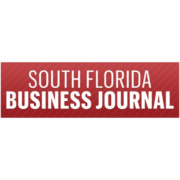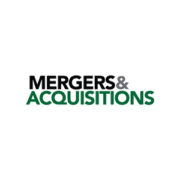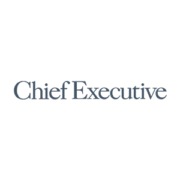Athenex, Inc. Reaches Agreement With Lenders to Pursue Expedited Sales Process
May 14, 2023 11:15 ET | Source: Athenex, Inc.
Follow To Best Facilitate, Company Voluntarily Files Chapter 11 Proceedings
Company Has Sufficient Resources to Support Athenex Pharma Solutions Operations and Fulfill APD Customer Orders During Process
BUFFALO, N.Y., May 14, 2023 (GLOBE NEWSWIRE) — Athenex, Inc., (NASDAQ: ATNX) (“Athenex” or the “Company”), a global biopharmaceutical company dedicated to the discovery, development, and commercialization of novel therapies for the treatment of cancer and related conditions, today announced that, following an ongoing strategic review, it has reached agreement with its lenders to move forward with an expedited sales process of the Company’s assets across its primary businesses: Athenex Pharmaceutical Division (“APD”), Orascovery, and Cell Therapy.
To best facilitate this process, Athenex and certain of its subsidiaries filed voluntary proceedings under Chapter 11 of the U.S. Bankruptcy Code in the U.S. Bankruptcy Court for the Southern District of Texas. This will enable the Company to divest its assets and wind down the Athenex platform in an orderly fashion, while seeking to maximize value for its stakeholders. The Company anticipates concluding the expedited sales process by July 1, 2023, with the Chapter 11 cases continuing thereafter to resolve claims.
Athenex has also reached an agreement with its secured lenders, subject to court approval, for the consensual use of cash collateral, which will enable the Company to, among other things, satisfy certain obligations to its vendors for authorized goods received and services rendered after the filing. Athenex Pharma Solutions (“APS”), which includes the Company’s manufacturing facility in Clarence, New York, is expected to continue its operations for at least the next 90 days, to provide commercial supply of tirbanibulin ointment. In addition, APD is continuing to operate in the ordinary course and fill customer orders with the ample inventory it has on hand.
Dr. Johnson Lau, Chief Executive Officer of Athenex, on behalf of the management team and the Athenex Board of Directors, said, “Throughout our history, we have sought to become a leader in bringing innovative cancer treatments to the market and improving patient health outcomes. Our team was successful in bringing tirbanibulin, through regulatory approvals, to the U.S. market and a number of EU countries, as well as Taiwan. Unfortunately, our oral paclitaxel product candidate received a complete response letter from the U.S. Food and Drug Administration, and this significant regulatory setback, coupled with challenging biotech markets and the difficult economic environment, put tremendous pressure on our ability to continue to fund our businesses.
“Over the past two years, we made considerable progress in refocusing our business around our promising NKT cell therapy platform, monetizing noncore assets to improve our balance sheet and extending our cash runway, paying down $108 million of debt, and undertaking a comprehensive review of strategic alternatives to create value for our stakeholders. While we explored every viable avenue to avoid this outcome, an orderly sales process represents the best path forward at this time.
“Our goal remains to identify purchasers who will continue development of the important drug candidates for which we have established a good foundation, and to bring them to market on behalf of medical practitioners and, most importantly, for patients. We are incredibly thankful to our team for their dedication to Athenex and will look to support our colleagues through this transition period.”
Additional information regarding Athenex’s Chapter 11 filing is available at https://dm.epiq11.com/athenex; by calling the Company’s claims agent, Epiq, at 888-601-3094 (toll-free) or +1 503-433-8501 (international); or by sending an email to Athenex@epiqglobal.com.
Pachulski Stang Ziehl & Jones LLP is acting as Athenex’s legal counsel. MERU is serving as its financial advisor and Cassel Salpeter & Co., LLC as its investment banker.
About Athenex, Inc.
Founded in 2003, Athenex, Inc. is a clinical-stage biopharmaceutical company dedicated to becoming a leader in the discovery, development, and commercialization of next-generation cell therapy products for the treatment of cancer. The Company’s mission is to become a leader in bringing innovative cancer treatments to the market and to improve patient health outcomes. In pursuit of this mission, Athenex leverages years of experience in research and development, clinical trials, regulatory standards, and manufacturing. The Company is focused on its innovative Cell Therapy platform, based on natural killer T (“NKT”) cells. For more information, please visit www.athenex.com.
Forward-Looking Statements
Except for historical information, information in this press release consists of forward-looking statements within the meaning of the Private Securities Litigation Reform Act of 1995 that involve risks, uncertainties and assumptions that are difficult to predict. Words such as “anticipate,” “could,” “expect,” “may,” “seek,” “will,” and similar expressions, or the use of future tense, identify forward-looking statements, but their absence does not mean that a statement is not forward-looking. Actual results might differ materially from those explicit or implicit in the forward-looking statements. These forward-looking statements are subject to a number of risks, uncertainties and assumptions including: risks inherent in the bankruptcy process, including the Company’s ability to obtain approval from the Bankruptcy Court for motions or other requests made throughout the course of the Chapter 11 proceedings; the Company’s liquidity and financial position; the effects of the Chapter 11 proceedings on the Company’s operations; the Company’s ability to continue to operate its business during the pendency of the Chapter 11 proceedings, and the availability of operating capital during the Chapter 11 proceedings; the Company’s ability to maintain relationships with partners, suppliers, customers, employees, regulatory authorities and other third parties; the length of time that the Company will operate under Chapter 11 protection; objections to the Company’s restructuring or liquidation process, third-party motions, or other pleadings filed that could protract the Chapter 11 proceedings; and Bankruptcy Court rulings in the Chapter 11 proceedings and the outcome of the Chapter 11 proceedings, in general. You should not rely upon forward-looking statements as predictions of future events. The Company undertakes no obligation to update publicly any forward-looking statements for any reason after the date of this press release to conform these statements to actual results or to changes in its expectations, except as required by law.
Investor Contacts
Media Contacts
Daniel Yunger / Wendi Kopsick
Kekst CNC
AthenexMediaInquiries@kekstcnc.com
Click here to read the PDF.
Click here to read the full article.







